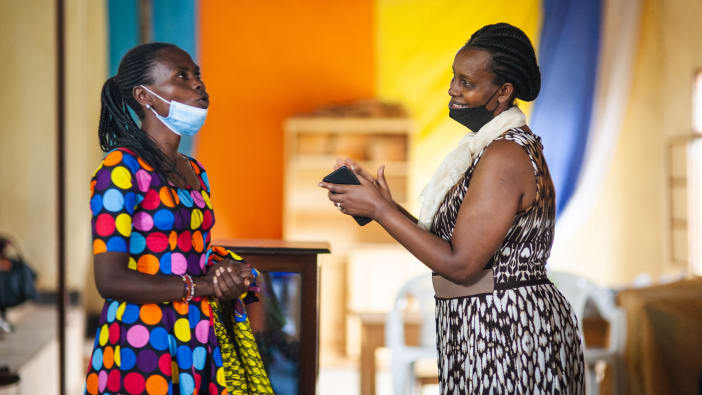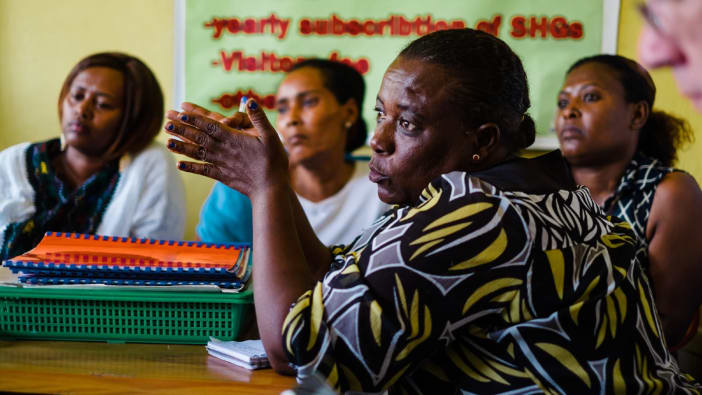For many years, the word ‘accountability’ was used mainly in connection with the relationship between organisations and donors. Donors wanted to ensure that organisations spent their money wisely, and organisations wanted to account for how funds were spent and impress donors to ensure future funding. However, the focus on accountability is also beginning to move towards the relationship between the organisation and people it serves. This means that the organisation takes account of the needs, concerns and capacities of community members and explains its actions and decisions to them.
Accountability to the community is often broken down into four main areas:
1 Participation
- Community participation is essential in any relief or development work and has been good practice for many years. However, sometimes ‘participation’ has been weak. For example:
‘Participation’ might mean that community members are simply informed about the project that has been planned. - Community members may be asked to ‘participate’ by contributing labour or resources but have no influence over decisions related to the project itself.
- Community members may have been given an opportunity to identify their needs and contribute ideas to project planning, but are not listened to when the project is being implemented.
When community members participate meaningfully in relief or development projects, it is more likely that the project will be effective because it meets real needs. The work is also more likely to be sustainable, because there is a greater sense of ownership by the community.
Community participation should be encouraged in:
- identifying needs, capacities and priorities
- identifying solutions and actions to meet needs. Local knowledge, expertise and capacities should be drawn on
- implementing projects, such as agreeing selection criteria or organising labour and resources
- monitoring and evaluating progress. When community members are given an opportunity to comment on the work being carried out and suggest changes, the project can be made more effective.
The process of involving community members puts them at the centre of the work and increases their sense of dignity.
2 Transparency
Transparency is about being open with communities about the work being carried out. This means sharing information about:
- the organisation – its purpose, objectives and values
- the project – plans, progress, costs and people involved.
When the community is informed about the project, it can more effectively participate and can hold the organisation to account for its commitments.
3 Feedback
Providing an opportunity for community members to give feedback on the project is an important part of being accountable. This could be in the form of complaints or suggestions.
There are many ways of welcoming feedback, such as having a box for written comments or enabling verbal feedback by telephone or to staff members in person. If the feedback is verbal, it should be written down by the staff member and checked with the community member to ensure it accurately states what they said. People are more likely to give honest feedback if they can give it in confidence. It is also helpful if both male and female staff are available to receive comments about the project.
Community members need to be informed about how the feedback will be dealt with. Sometimes staff will need to discuss a response with each other before taking action. Community members should be informed regularly about progress. When changes are made to the project as a result of feedback, the community should be informed. When a community sees that they are being listened to and that their comments make a difference, they will be more likely to participate in the project, which will in turn improve its effectiveness.
4 Learning
Organisations that are accountable to the people they serve are committed to improving the quality of their work. This means demonstrating that they listen to community members and take action accordingly. It is important that learning related to the project is recorded and that it is communicated to communities and other stakeholders. Learning is usually recorded in writing, such as case studies and reports. Evaluations during and after the completion of the project are a good source of learning. This principle of community accountability is often easier to carry out if there is a culture of learning within the organisation as a whole. For this reason, it can be helpful to employ staff who are dedicated to documenting learning, or to include in everyone’s job description a responsibility to record learning.
It is good to share learning with the community as this strengthens relationships. In communities where many people are non-literate, methods of sharing learning could include meetings, radio, role play or posters.
Ensuring that a project is accountable to communities requires an investment of time, effort and funds, but many activities are low-cost and simple and can make a significant difference to the effectiveness of the project and the lives of the communities. Examples of how accountability to the community works in practice are given in the articles on pages 6 and 14.
David Bainbridge is Tearfund’s Disaster Management Director. He is currently leading a Tearfund initiative to support accountability to the community in all Tearfund-funded work.
Email: [email protected]









